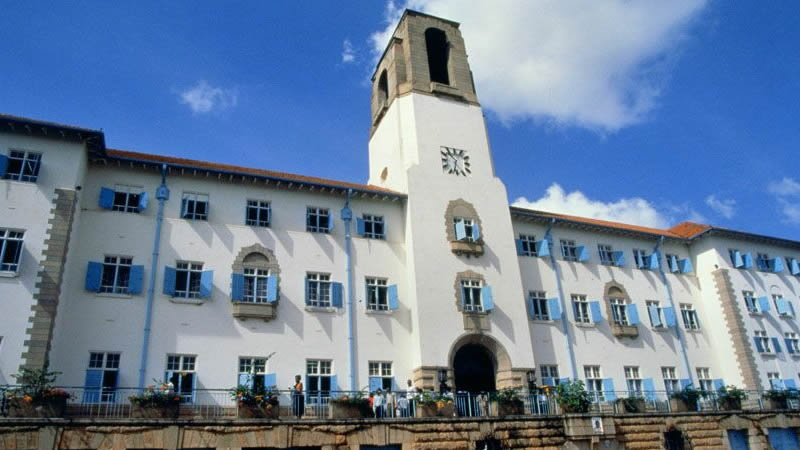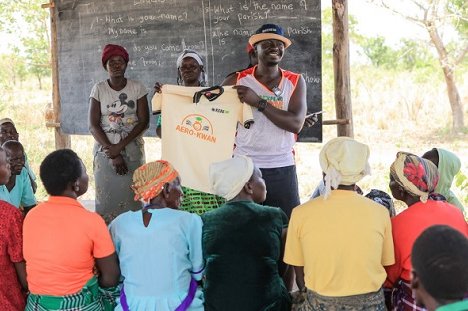By Mark Wamai
When Leonard Kateete joined the Makerere University’s School of Fine Art in 1973, students “were living like children of kings”; meals were a five course affair and the allowance “boom” was literally booming. That was until 1975 when the Guild President Hon. Olara Otunnu in his address challenged the government’s spending on arms instead of education and other sectors. That address marked the end of his guild presidency and stay in Uganda as well as the royal treatment of Makerere students.
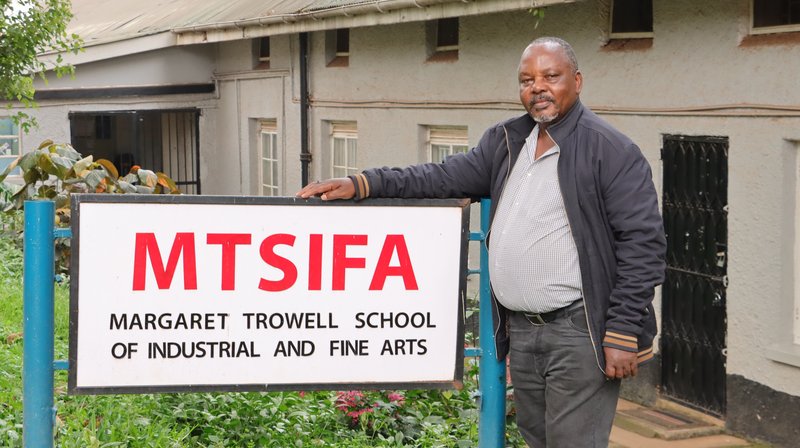
Leonard Kateete at the School of Fine Arts ahead of his 2024 Exhibition. Photo by Romana Nabbosa
The rest of Kateete’s stay at Makerere until 1977 was characterised by scarcity of resources. However, thanks to his gifted hands and mind, the scarcity all around didn’t affect him. “The often-emphasised originality and the question of one’s art selling itself is what stuck in my mind as one of the gains of my being in the School of Fine Art.
“In 1975, together with the Late Elly Tumwiine, one Kibira and another Walulya who is still alive, we were commissioned by the Ministry of Education to make a huge portrait of Idi Amin for the OAU displays at Nakivubo. That commissioning made my life a bit comfortable,” he reminisced.
This joint effort wasn’t his first work of Idi Amin. Early in 1972 as he read the newspapers at Tusitukirewamu – a shop that occupied the present day location of Mapeera House where he displayed his art as a 20-year old freelance artist – Kateete came across a story of a gentleman called Sserwabwe, who had presented a painting to then President Idi Amin. Inspired, he decided to do the same. “I went to the village, cut some banana fibres from my mother’s plantation, bought plywood, went to UBC, asked for some photographs which I took home and started the mosaic.”
Happy with the result, he sought guidance from the Ministry of Culture where an impressed Mr. George Wilberforce Kakoma, famous composer of the Uganda National Anthem, offered Kateete Shs1,000 on behalf of the Ministry.
“I remember withdrawing the money from the Central Bank and walking home all the while touching my pocket just in case any of the notes escaped. I bought my Mum the traditional gomesi and all that goes with it,” he says.
And whereas Kateete had fully appreciated the generous token from the Ministry of Culture, he couldn’t get rid of the idea of presenting his work to the President. So he went back to UBC and picked another photo and started on a second mosaic, which he completed after three weeks.
Meeting the President
However, the back and forth trips as Kateete tried to seek audience with the President and present his mosaic was tiring. As he left the President’s Office, Kateete encountered the great grandfather of Kabaka Ronald Mutebi II, the late Prince Kalemera, whom he had met a few months before. Amazed by the mosaic, he led him to the UNESCO Office run by Mr. Magoba, who in turn immediately telephoned Princess Elizabeth Bagaya, then the Roving Ambassador.
“I came in handy because Princess Bagaya had a great idea to present to the Cabinet – something to the effect of building schools for talented young people. So she made arrangements and one afternoon, she presented her idea to the first Cabinet of Idi Amin and afterwards, I presented my mosaic to the President,” recall Kateete.
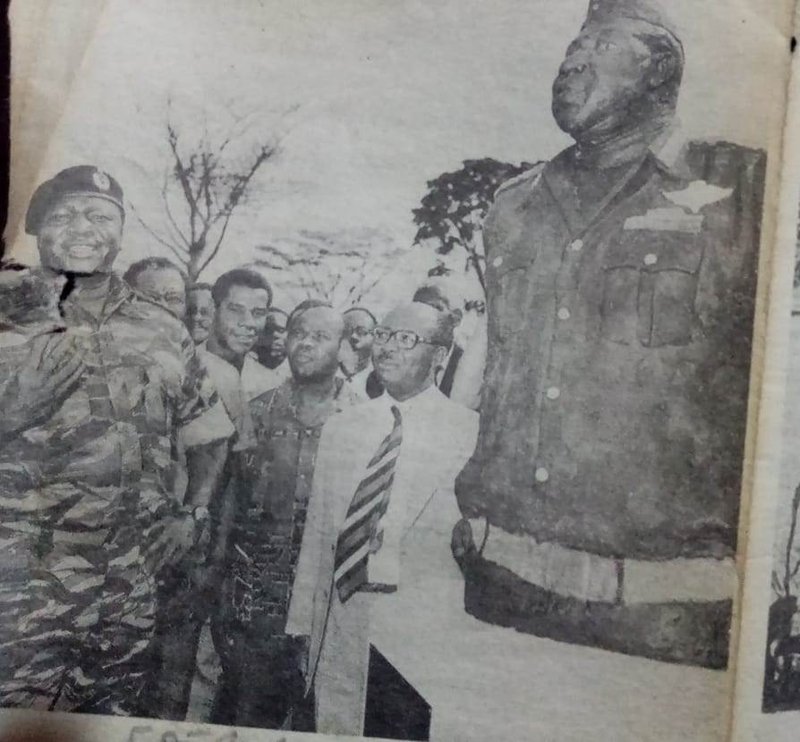
A newspaper clipping of President Idi Amin besides a bust made by Leonard Kateete as a First Year Student in 1973 upon being commissioned by Associated Creative Designers
The event that was broadcast live on television and featured in the newspapers the next day made Kateete an overnight celebrity. “That single event made many accept their children’s desires to become artists. After that, Princess Bagaya asked me to go back to her office and thereafter Mr. Magoba’s office where I got a letter that I presented to the University and I was invited for another entrance exam. I passed the exam and in 1973 I joined the School of Fine Art.”
Despite having scored a distinction in fine art at O’Level, his not-so-good performance in other subjects had initially rendered him ineligible to join the School of Fine Art. Finally however, he now found himself at the place he wanted to be.
The beginnings of an artist
Kateete, a multi-talented all-round artist was born on 23rd March, 1951 at the present day Mitala Maria Health Centre III thanks to the adept bicycle riding skills of his maternal uncle, Mr. Wasswa George William. “Uncle always teased that if it weren’t for him, I would either have not been born or been dropped somewhere in the sand or the bush. He rode ‘the ambulance’ over 14 kilometres all the way from my village in Lukonge, Kayabwe to Mitala Maria.”
Kateete’s art journey began with exposure to carpentry and at seven, amazed his nine year old brother by making his own bed. He later got exposed to colour by viewing patterns made using coloured chalk along the road as the Corpus Christi procession made its way through Nkozi parish. At the age of eight he was exposed to statues, thanks to a store-full of images of the Virgin Mary he chanced upon in his parish. The heavy rains of 1960 led several colonies of termites to start putting up their anthills and, inspired, he too started making his own statues.
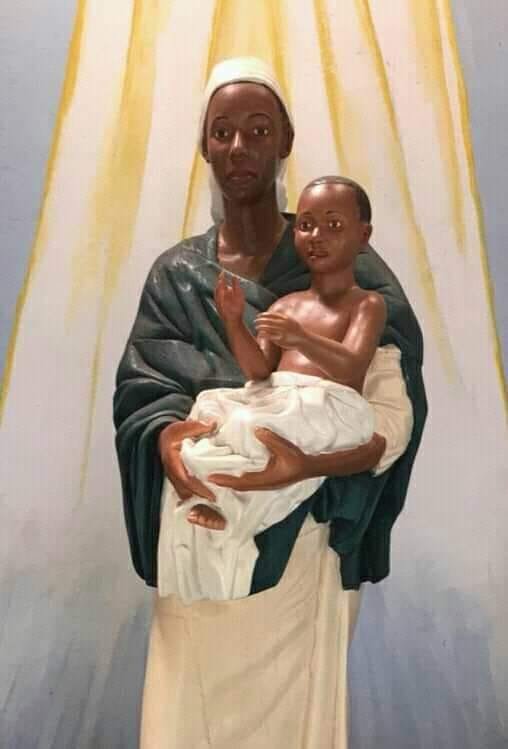
A 1999 carving by Leonard Kateete for a Marian shrine in Kenya.
Kateete attended Nabusanke Primary School whereupon one of his teachers Mrs. Kayiwa’s proclamations, implanted the idea of becoming an artist firmly into his head. After his Primary Six exams, he joined Gombe SS and later Bwere SS, where he qualified to join Namilyango College. It was while in Form Two at Namilyango that Kateete got exposed to modelling with papier mache and more payment as an artist. One of the teachers in the nearby primary school who was a struggling artist offered him Shs 25 per painting.
“He upgraded me from a poor villager who got Shs 20 as pocket money to a young man who had 100 shillings in his pocket just like the rich guys I found at Namilyango,” Kateete recalled with nostalgia.
While still a Form Two student, Kateete emerged winner of an Africa-wide art competition for secondary schools and colleges. “One day during the school assembly, it was announced that Kateete Leonard had won gold and first prize in the competition. I got the gold but nothing was ever said about the US$3,000 prize money,” he recalled with a chuckle.
Kateete would go on to create a number of inspiring art pieces, with the mosaic art piece of the President being one of them.

Former Zambian President H.E. Fredrick Chiluba shakes hands with Leonard Kateete after receiving his portrait (in the background) in the late 1980s.
Fleeing into exile
The photo of Kateete flanked by Princess Bagaya presenting his mosaic to President Idi Amin proudly hung in the family sitting room alongside that of his step-brother, dressed in his cadet uniform. Unfortunately, the same photos would in 1980, following the removal of Idi Amin as president, become a source of great terror.
“One day I went home and found my father frightened, after being paid a visit by a contingent of the liberation army soldiers, taken there by a fellow villager, on the accusation of having sons who were close associates of Idi Amin. The evidence was on the wall,” he recalled somberly. Although his father managed to argue himself and his sons out of execution that day, his cadet son would still pay the price. Kateete’s step-brother was apprehended and imprisoned for three years in a Tanzanian jail, and Kateete took that as his cue to flee the country.
“And so on 24th August, 1980, I crossed over to Kenya and the next day 25th I arrived in Nairobi with two trousers, two pairs of shoes, three shirts, and a blue and green blanket that we were given as relief service after the liberation war. I was housed by a friend, the late Katumba, and three weeks later, Anne joined me,” Kateete says, in reference to Anne Theresa Nabasirye, his late wife. The two met at the School of Fine Art in 1974.
Together, they eked out a living as art teachers, a path that eventually led them to Loreto Convent Msongari. It was while at Msongari that the principal encouraged Kateete to ask his students to make drawings of Nelson Mandela in anticipation of his visit to Kenya. He not only guided his students but also decided to paint a portrait, thanks to the cover photo of a 1990 edition of the Newsweek magazine and a groundsman whose skin tone and wrinkles matched Mandela’s.
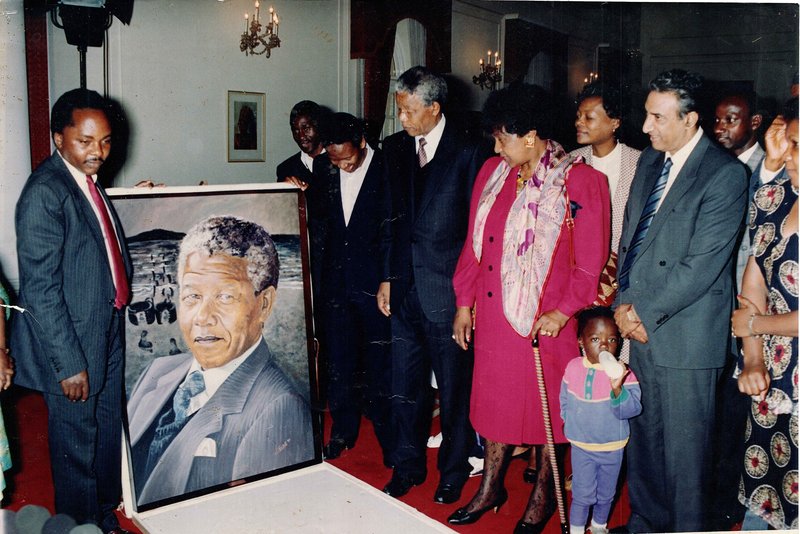
Leonard Kateete presents his portrait to Nelson and Winnie Mandela on 14th July 1990.
The portrait turned out to be his most memorable work of art that has been seen by many who loved Mandela. Kateete, together with his family had the privilege of personally presenting the portrait to Mandela on 14th July, 1990 during his visit to Kenya.
“Madiba gave me a permanent place in a museum – every artist would love to have that dream fulfilled,” Kateete remarks, before adding “and so did the 24 paintings at the National Museum of Kenya.” The 24 paintings are what Kateete refers to as his “next most memorable art”, the result of a project done around East Africa between 1995 and 1997 depicting a particular couple in a tribe to represent a community, and exhibited for one and a half years as part of Kenya at 50 celebrations.
Exhibiting his works
Kateete continued producing award-winning art and decades on, from 12th to 31st January, 2024 to be specific, Kateete held an exhibition at the Makerere Art Gallery celebrating his artistic journey over 50 years. He was all praises for his alma mater for expanding his vision by introducing him to all the disciplines of fine art. “So artists should be open-minded in that they shouldn’t get stuck with watercolour or statues or ceramics because art is seasonal. They should try to be multidisciplinary because that is the best way to live. I have survived because of that.”
He is equally happy that Makerere is broadening its approach of teaching art by introducing subjects such as fashion design and interior design among others.
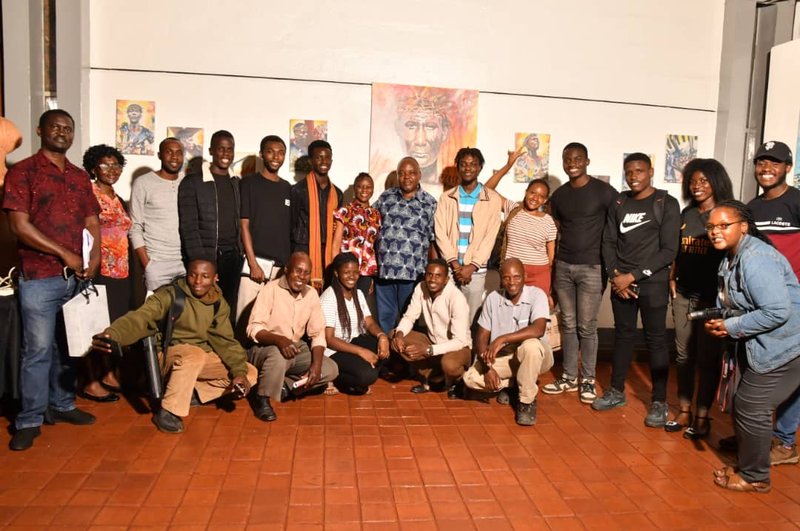
Leonard Kateete (Centre) with Guests at his 2024 Exhibition held at Makerere University. (Photo by Neeson Musa)
Kateete therefore urges young graduates never to give up on their craft, however difficult it is to earn or gain recognition initially. “No one should be afraid of practicing his or her art, after all, your art is your own expression. Just because somebody else is selling should not discourage you from practicing your own unique style. There will always be somebody who will love what you are doing.”
Kateete nevertheless admits that the life of an artist can be lonely. “Lucky is an artist who has a partner who appreciates the art and the messy life we live. I managed to hold onto Anne Theresa who was also my fellow artist from the School of Fine Art until 2002 when she left me because of cancer. She left me with two children, a girl and a boy.”
His eldest daughter is practicing public relations and communication while his son is an underwriting manager with the National Insurance Regulatory Board. He also has another son, currently pursuing a Master of Medicine. From his second marriage, he has a son who is a first year student of International Business and a young girl who is now in Junior One. “And so I have a family. All of them are good artists and although I have never imposed the life of an artist on them, they have turned out to be artists in one way or another.
“But, there are many others who are not my biological children that I have supported and so far two have graduated, benefits of the work they do with me, and this will not end until the day I become blind,” he adds.
Kateete is therefore a strong advocate of parents encouraging children to develop their creativity not only in art but every aspect including science. “Let the children be creative. That is why China is economically ahead of everyone else because they learnt how to sell simple toys to children from all over the world and earn trillions of dollars in revenue. Why can’t we do the same?” he asks.
In 2020 the Kateete Pan African Art Foundation Trust was started to promote and help artists with the same vision to meet and sell their artwork to the world. “I hope that through my story, people will be inspired when they learn that there is life after school as an artist so they should never give up,” Kateete concludes.
Related News
![]() Please join hands with the Makerere University Endowment Fund as it works towards attracting & retaining the best faculty, providing scholarships, and investing in cutting-edge research and technology.
Please join hands with the Makerere University Endowment Fund as it works towards attracting & retaining the best faculty, providing scholarships, and investing in cutting-edge research and technology.
